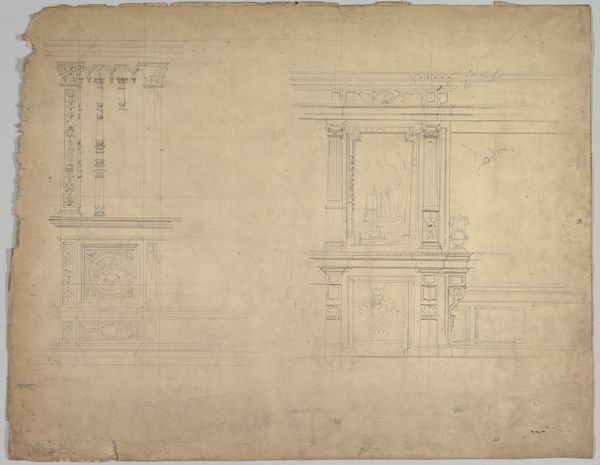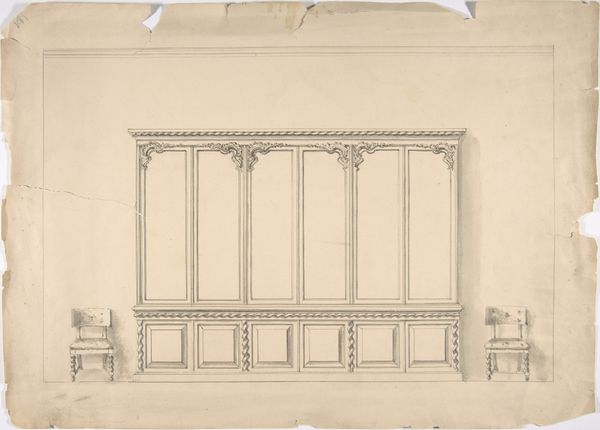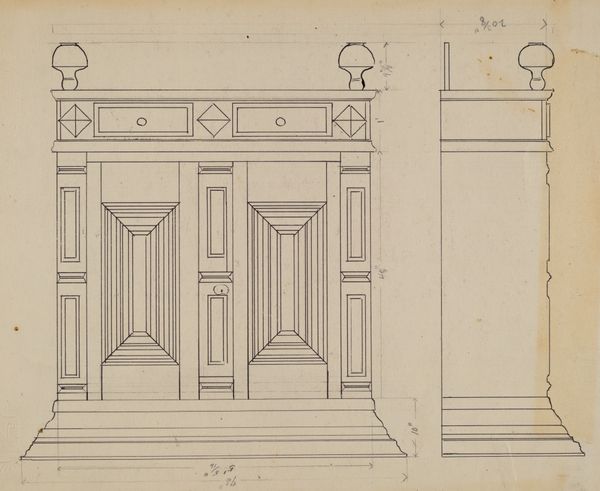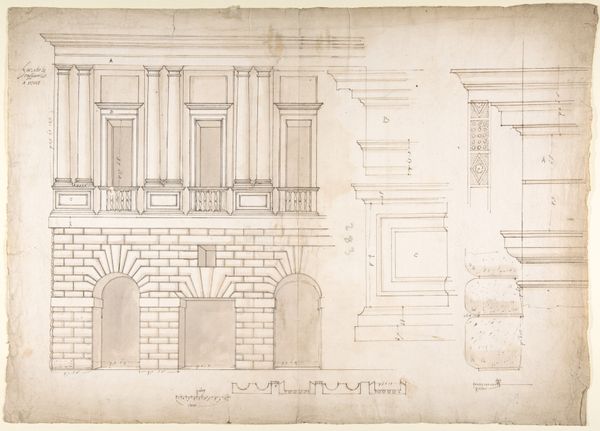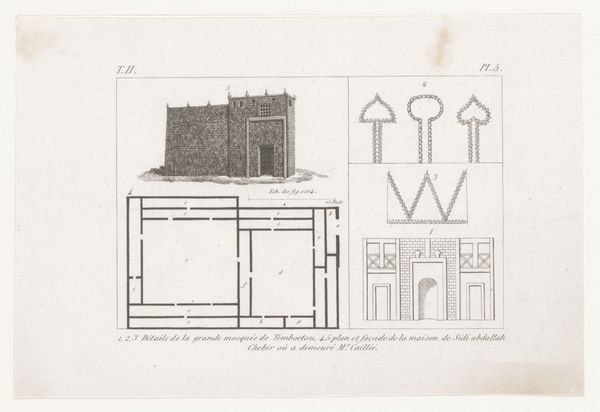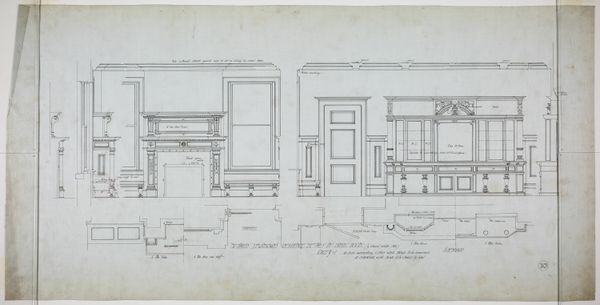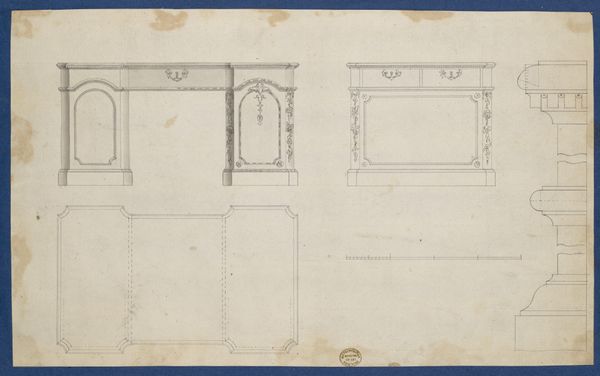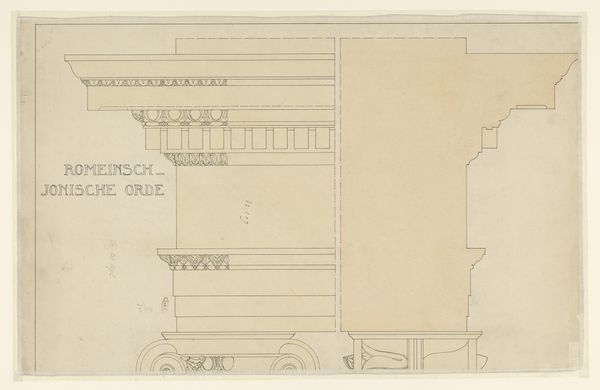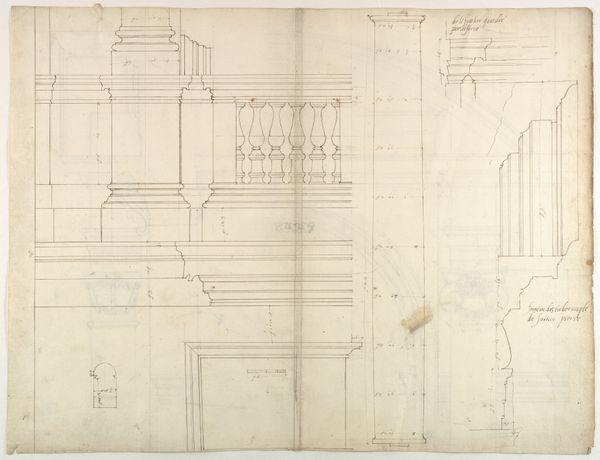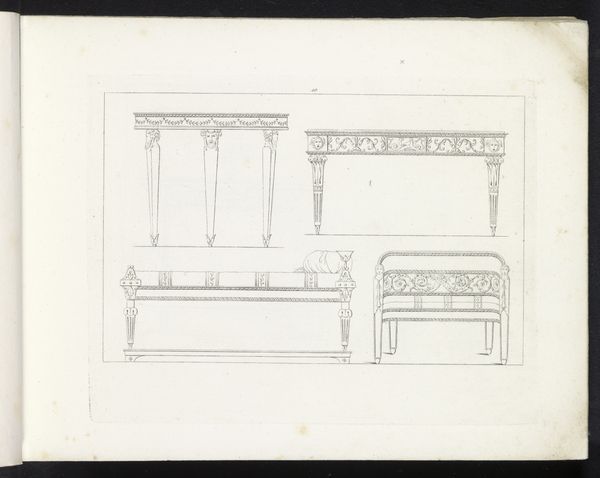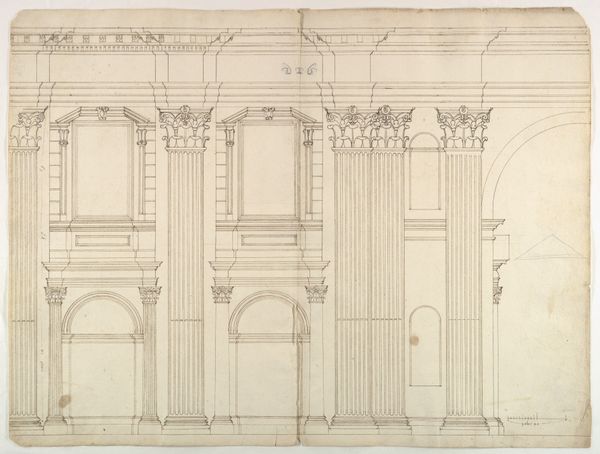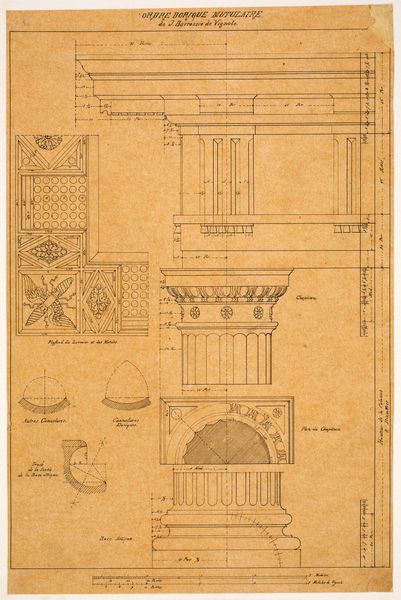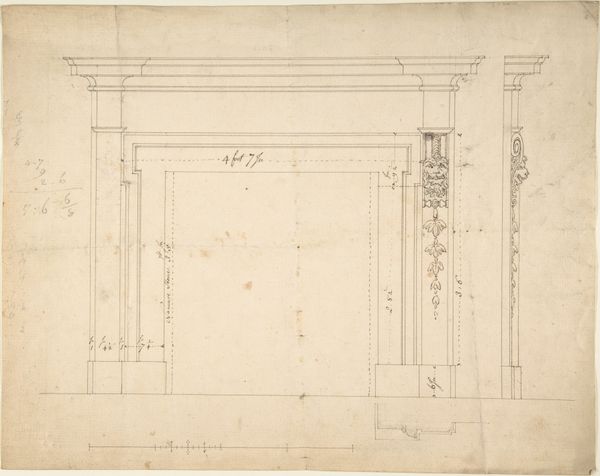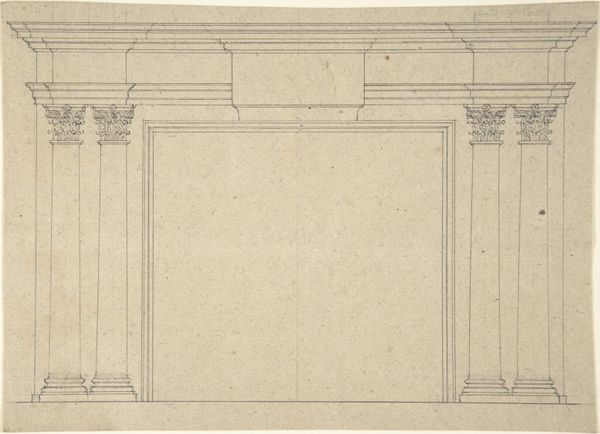
drawing, print, paper
#
drawing
# print
#
paper
#
geometric
#
academic-art
#
decorative-art
Copyright: Public Domain
Curator: This schematic rendering is entitled "Piano Design" from circa 1800-1900. The anonymous draftsperson rendered it using drawing and print on paper, and it now resides at the Metropolitan Museum of Art. Editor: It's incredibly spare. All sharp angles and exacting lines. The texture of the paper almost contradicts the rigid geometric form of the piano itself, giving the object a sense of weight and presence. Curator: Exactly! The late 19th century saw an increased focus on design reform and industrial production. Objects, even musical ones, began to reflect a burgeoning middle class striving for elegance that reflected an ideal of progress through design. Editor: Note how the repetition of rectangular panels creates an almost architectural structure for the piano itself, imbuing the instrument with an unexpected austerity. Curator: This resonates when you consider the Victorian era’s obsession with social and domestic order. Owning a piano signified not just wealth, but also the family’s engagement with the cultured arts. Female education, especially, heavily incorporated musical training. Editor: Yes, and while the piece lacks color, the balance achieved through the placement of the side and front views reveals a deep sensitivity to form and functionality. It’s a perfect fusion of precision and artistic intention. The upper filigree adds visual flair. Curator: Looking through a post-colonial lens, it invites an examination of Western artistic domination. Mass-produced objects reflecting this period showcase a certain aesthetic uniformity exported to other cultures. These instruments would eventually sit as status symbols worldwide. Editor: It’s hard not to appreciate how this drawing transforms the musical instrument, with all of its potential for expressive melody and complex harmony, into a testament of streamlined and controlled lines and balanced masses. Curator: Indeed. Seeing such an object removed from the realm of performance redirects our gaze toward the socio-political sphere shaping domestic aspirations, underscoring class, gender, and social advancement. Editor: I find it's all about balance and elegance in this technical draft. Curator: The broader narrative of Western aspiration really resonates here for me.
Comments
No comments
Be the first to comment and join the conversation on the ultimate creative platform.
